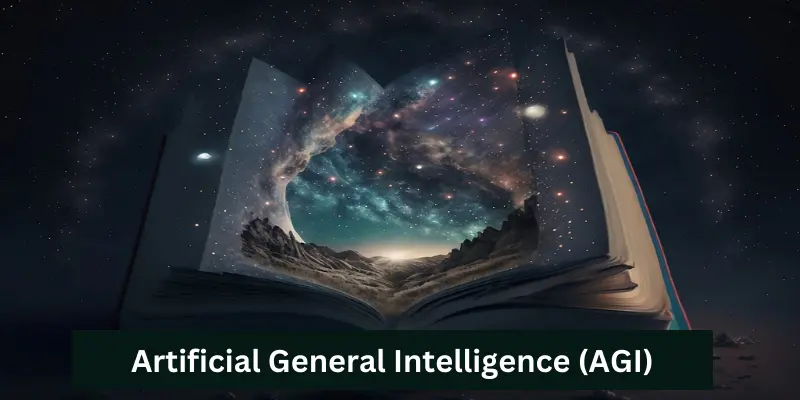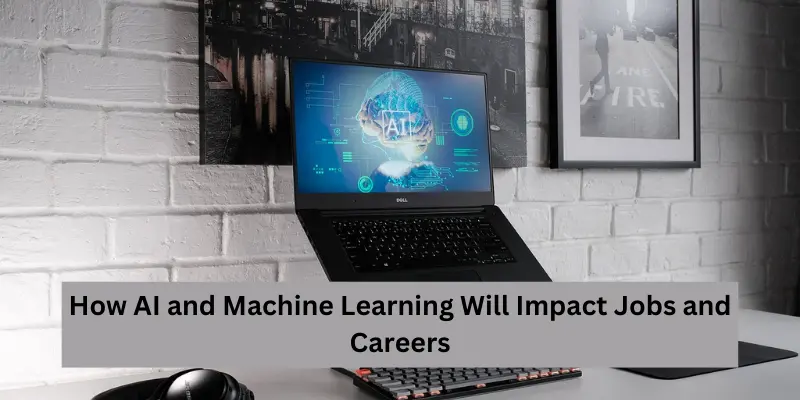What is the Future of Artificial Intelligence & Machine (L)
Published: 01 Jan 2025
Artificial Intelligence (AI) and Machine Learning (ML) are no longer just buzzwords—they’re shaping our world in once-unimaginable ways.
AI and ML rapidly transform every sector, from revolutionizing healthcare to driving autonomous vehicles. But what does the future hold for these groundbreaking technologies? In this article, we’ll dive deep into the future of AI and Machine Learning, explore emerging trends, and discuss how these technologies will impact our daily lives, careers, and industries. Future of Artificial Intelligence & Machine (L) What is Artificial Intelligence and How is it Used
Understanding AI and Machine Learning

Before exploring the future, it’s essential to have a clear understanding of what AI and ML are.
Artificial Intelligence (AI) is the simulation of human intelligence by machines programmed to think, learn, and problem-solve. It encompasses a variety of technologies, including natural language processing (NLP), computer vision, and robotics. Disadvantages of Artificial Intelligence
Machine Learning (ML) is a subset of AI that enables computers to learn from data and make predictions without being explicitly programmed. Through algorithms, ML systems identify patterns and improve their accuracy over time, often without human intervention.
The Current Impact of AI and Machine Learning
AI and ML are already making a significant impact across various industries. Let’s take a look at some of the areas where these technologies are already transforming the present:
Healthcare:
AI is helping doctors diagnose diseases with greater accuracy and speed. For instance, AI-driven tools analyze medical images to detect conditions like cancer early, which can save lives. Machine learning algorithms are also being used in drug discovery, helping researchers identify new treatments more quickly and efficiently.
Finance:
In the world of finance, ML algorithms are revolutionizing fraud detection and risk management. Banks use AI-powered systems to analyze vast amounts of transaction data, quickly identifying patterns indicative of fraudulent activity. Additionally, algorithmic trading powered by ML helps investors make better decisions by analyzing market data and predicting stock trends
Autonomous Vehicles:
Self-driving cars are powered by AI and ML. These vehicles use deep learning models and computer vision to interpret their surroundings and navigate roads safely. AI allows autonomous cars to predict potential hazards, optimize routes, and improve overall driving safety.
Retail:
Retailers like Amazon use machine learning to personalize recommendations, providing a tailored shopping experience for each customer. ML analyzes your shopping history, preferences, and even browsing behavior to suggest products that you’re most likely to purchase.
The Future of AI and Machine Learning
The future of AI and ML is filled with opportunities for further innovation and advancement. As technology evolves, we can expect AI to become even more integrated into our lives. Here are some key trends to watch out for.Machine Learning Explained
Artificial General Intelligence (AGI)

While current AI systems are excellent at performing specific tasks—such as playing chess or diagnosing diseases—they are still far from mimicking the full range of human cognitive abilities. This is where Artificial General Intelligence (AGI) comes in. AGI refers to AI systems that can perform any intellectual task that a human can do.
In the future, we may see AGI systems capable of solving complex problems, reasoning through unfamiliar situations, and even displaying creativity. However, developing AGI will bring significant breakthroughs in algorithms and understanding of human cognition.
AI in Healthcare
The future of AI in healthcare is incredibly promising. We’re already seeing AI-driven applications that help doctors diagnose diseases more accurately. But in the future, AI will take things a step further by enabling personalized medicine. Machine learning models will analyze your unique genetic information, lifestyle, and health data to provide treatments tailored specifically to you.
AI will also continue to improve predictive analytics, enabling doctors to identify potential health issues before they become serious. For example, AI-powered tools may predict your risk of developing diseases like diabetes or heart disease, giving you a chance to take preventative action.
AI and Robotics
Robots powered by AI are set to become much more capable in the future. In industries like manufacturing, logistics, and agriculture, AI will help robots perform complex tasks, such as assembling products, harvesting crops, and delivering goods.
Additionally, we can expect to see service robots in public spaces, performing tasks like cleaning, security, and customer service. As AI systems become more sophisticated, these robots will be able to navigate more effectively, understand human emotions, and respond intelligently to various situations.
AI in Education: Transforming Learning 📚
AI has the potential to reshape the education system. Imagine AI-powered platforms that can personalise lessons based on each student’s learning pace and style. By analyzing a student’s strengths and weaknesses, AI could recommend personalized learning paths and offer real-time feedback.
In the future, AI tutors could provide one-on-one instruction to students, guiding them through complex concepts and helping them improve in specific areas. This could make education more accessible and effective for students worldwide.
Ethics and Governance of AI ⚖️
As AI becomes more powerful, ethical concerns surrounding its use will become more pressing. Issues such as bias in AI models, data privacy, and the potential for job displacement are just some challenges that society must address. artificial intelligence

Job Automation and Transformation
AI and ML will automate repetitive tasks like data entry, customer service, and assembly line work, reducing the need for manual labor in sectors such as retail, manufacturing, and logistics.
New roles will emerge in AI system development, data science, and robotics maintenance, offering career opportunities in tech-driven fields.
Workers will need to adapt by learning to collaborate with AI systems to improve efficiency, rather than being replaced by automation.
The Rise of AI and Data Science Careers
Demand for data scientists and machine learning engineers will skyrocket as businesses integrate AI into their operations.
Data analysis, predictive modeling, and AI algorithm development will become core competencies in industries ranging from healthcare to finance.
Professionals in these fields will need advanced skills in programming, statistics, and AI frameworks to thrive.
Human-AI Collaboration
AI will act as a tool to enhance productivity, helping workers make data-driven decisions, streamline workflows, and improve customer service without fully replacing human expertise.
Workers in fields like healthcare, marketing, and finance will partner with AI systems to perform more strategic and creative tasks, leveraging AI for insights and automation.
AI’s role will be to augment, not replace—allowing humans to focus on complex problem-solving and creative thinking.
Upskilling and Reskilling for the AI Age
As automation takes over certain jobs, there will be an increased need for upskilling (learning new tools or techniques) and reskilling (transitioning to new industries) programs.
Workers in at-risk industries (like retail or manufacturing) will need to learn skills in AI, data science, or tech-oriented fields to remain competitive in the job market.
Online learning platforms and corporate training programs will play a key role in helping employees prepare for AI-driven changes.
Ethical and Governance Roles in AI
AI ethics specialists and policy advisors will become crucial as AI technologies evolve, helping ensure that AI is used fairly, transparently, and responsibly.
Governments and organizations will need experts to guide the regulation of AI, ensuring it aligns with societal values and prevents biases or discrimination in automated systems.
New job categories will emerge in the governance of AI, focusing on creating ethical standards and addressing the societal impact of automation.
Challenges on the Road to AI’s Full Potential
While the future of AI and ML is exciting, there are challenges that we must address along the way. Some of these include:
- What is the primary difference between Artificial Intelligence (AI) and Machine Learning (ML)?
a) AI is a subset of ML.
b) AI mimics human intelligence, while ML enables computers to learn from data.
c) ML is focused only on robotics.
d) AI and ML are the same thing.
- Which of the following industries is NOT currently impacted by AI and ML?
a) Healthcare
b) Autonomous Vehicles
c) Fashion Design
d) Finance
- What does Artificial General Intelligence (AGI) aim to achieve?
a) Machines that are better than humans at chess.
b) AI systems capable of performing any intellectual task that a human can do.
c) AI that only performs one specific task well.
d) AI that can only perform mathematical calculations.
- How will AI and ML impact the healthcare industry in the future?
a) By replacing doctors entirely.
b) By enabling personalized medicine and predictive analytics.
c) By reducing the need for medical research.
d) By automating surgeries entirely.
- Which of the following is a major concern when it comes to the ethics of AI?
a) Speed of AI learning
b) Data privacy and security
c) The cost of AI development
d) The popularity of AI in entertainment
- What is the expected role of AI in future job markets?
a) AI will replace most workers in all fields.
b) AI will automate repetitive tasks but also create new job opportunities in AI development, data science, and robotics.
c) AI will eliminate all job opportunities in the tech industry.
d) AI will only be used for jobs in healthcare.
- Which of the following is a potential challenge as AI and ML technologies evolve?
a) Overuse of automation leading to job creation.
b) The emergence of new industries without any risks.
c) Ensuring AI is used ethically, such as preventing biases in automated systems.
d) AI systems learning too slowly to be effective.
- How can individuals prepare for the AI-driven future?
a) Ignore AI advancements and focus on traditional jobs.
b) Invest in AI education, embrace AI in business, and stay informed about developments in AI.
c) Rely on AI to make all business decisions without learning new skills.
d) Avoid any industries related to AI development.
- What is the role of AI-powered robots in industries like manufacturing and agriculture?
a) AI-powered robots will only replace office workers.
b) AI robots will help with tasks like assembly, crop harvesting, and deliveries.
c) AI robots will be used for entertainment purposes only.
d) AI-powered robots will not impact these industries at all.
- What job categories are expected to grow as a result of AI and ML adoption?
a) Jobs in manual labor
b) Roles focused on ethics and governance of AI, including AI ethics specialists and policy advisors.
c) Jobs in marketing and advertising only
d) Only customer service jobs
Answers:
b) AI mimics human intelligence, while ML enables computers to learn from data.
c) Fashion Design
b) AI systems capable of performing any intellectual task that a human can do.
b) By enabling personalized medicine and predictive analytics.
b) Data privacy and security
b) AI will automate repetitive tasks but also create new job opportunities in AI development, data science, and robotics.
c) Ensuring AI is used ethically, such as preventing biases in automated systems.
b) Invest in AI education, embrace AI in business, and stay informed about developments in AI.
b) AI robots will help with tasks like assembly, crop harvesting, and deliveries.
b) Roles focused on ethics and governance of AI, including AI ethics specialists and policy advisors.
Bias and Fairness in AI:
AI systems learn from data, and if the data is biased, the AI will also be biased. This could lead to unfair outcomes, particularly in areas like hiring, lending, and law enforcement.
Data Privacy and Security:
As AI systems rely on vast amounts of personal data, ensuring that this data is protected will be crucial. Cybersecurity measures will need to evolve alongside AI to prevent breaches and misuse.
Ethical Use of AI:
As AI becomes more autonomous, ensuring that it is used ethically will be essential. Issues like AI’s role in warfare, surveillance, and decision-making will require careful consideration.
Preparing for the Future of AI and ML
As AI and ML continue to shape the future, it’s important for individuals and businesses to stay informed and prepared. Here are a few steps you can take:
Invest in AI Education: Whether you’re a student, professional, or entrepreneur, learning about AI and ML can open up new opportunities. Online courses, certifications, and hands-on projects can help you build the skills needed to thrive in the AI-powered future.
Embrace AI in Your Business: If you’re a business owner, start exploring how AI can help optimize your operations. From automating customer service to improving supply chain management, AI has the potential to increase efficiency and drive growth.
Stay Up-to-Date with AI Developments: AI is a rapidly evolving field. Keep yourself informed about the latest trends, breakthroughs, and ethical debates surrounding AI. By staying updated, you’ll be better positioned to adapt to changes in technology and society.
Conclusion:
The future of Artificial Intelligence and Machine Learning is brimming with potential. From healthcare and education to business and entertainment, these technologies are poised to change the way we live, work, and interact with the world. As we move forward, it’s crucial to navigate the challenges and embrace the opportunities AI offers. By staying informed and preparing for the changes ahead, we can all play a role in shaping a future where AI benefits everyone.
Artificial Intelligence (AI) refers to the broad concept of machines being able to perform tasks that would typically require human intelligence, such as problem-solving, language processing, and decision-making. AI encompasses a range of technologies, including natural language processing, robotics, and computer vision.
Machine Learning (ML), on the other hand, is a subset of AI. It involves training machines to learn from data, allowing them to make predictions or decisions without being explicitly programmed. In essence, while AI is about mimicking human intelligence, ML focuses on creating systems that can improve their performance over time by analyzing data and identifying patterns.
Answer:
AI and ML are expected to have a transformative effect on the job market. While automation will reduce the need for manual, repetitive tasks in fields like customer service, data entry, and manufacturing, new career opportunities will arise in industries such as AI development, data science, and robotics.
Rather than replacing humans, AI will augment human capabilities. Workers in sectors like healthcare, marketing, and finance will collaborate with AI systems to make more data-driven decisions, enhance productivity, and handle more complex, creative tasks. To thrive in the AI-driven future, it will be crucial for workers to engage in upskilling (learning new tools or techniques) and reskilling (transitioning to new roles), particularly in tech-driven fields like AI, machine learning, and data analysis.






